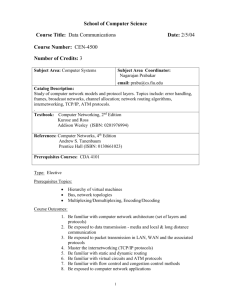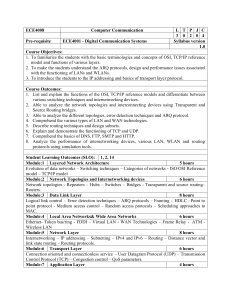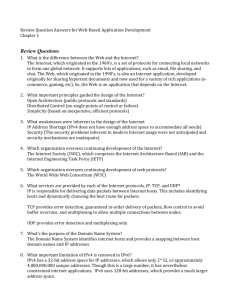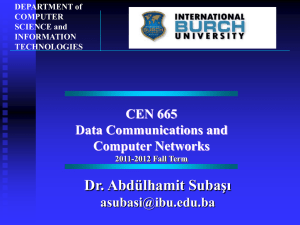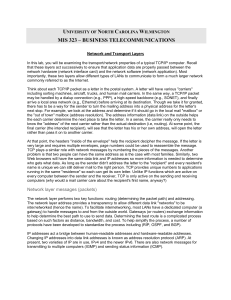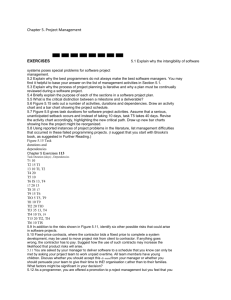DSI Unit Guide
advertisement
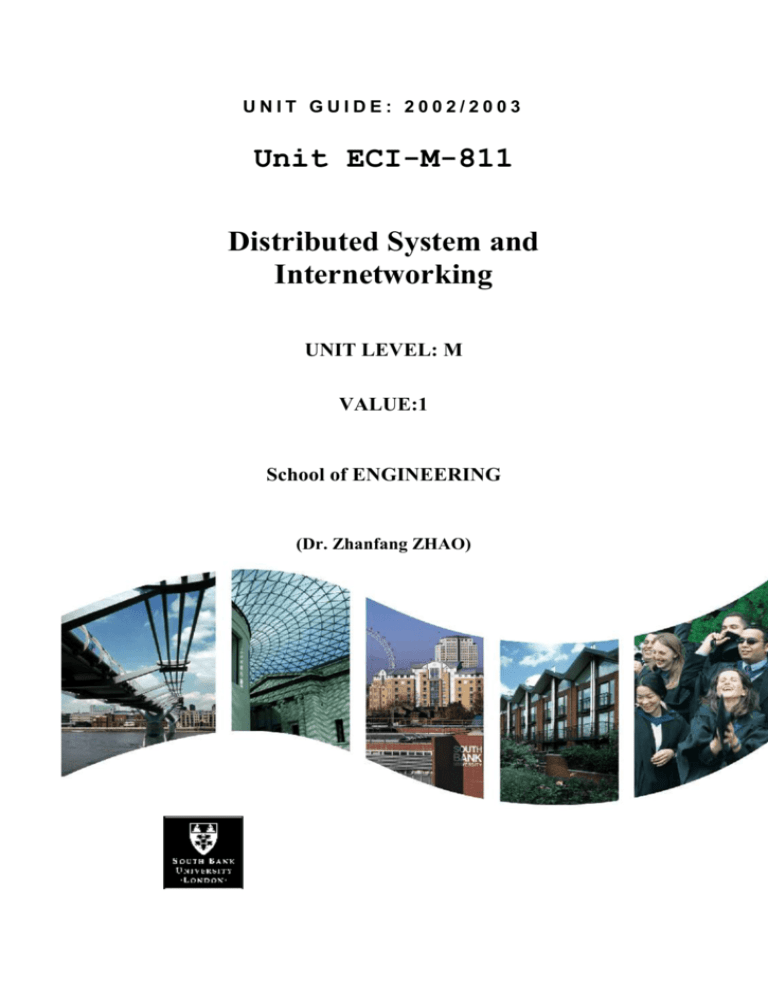
UNIT GUIDE: 2002/2003 Unit ECI-M-811 Distributed System and Internetworking UNIT LEVEL: M VALUE:1 School of ENGINEERING (Dr. Zhanfang ZHAO) Unit Guide 2002/2003 Distributed Systems and Internetworking E-CI-M-811 MSc Information Systems Engineering, MSc Computer Systems & Networking, MSc Telecommunications & Computer Networks Engineering Level M Unit coordinator Dr Z Zhao, Room T411, ext. 6340, email: ZhaoZA@sbu.ac.uk Lecturers: Dr Z Zhao Dr P. Xiao Pre-requisites Introduction to Data Comms or Computer Systems Aims To provide an understanding of distributed computer systems, their systems software and applications. To enable system managers and users to understand and exploit the use of networks and their interconnections. Learning Outcomes After completing this unit, the student will be Familiar with the concepts of distributed systems hardware and distributed operating system facilities. Able to appreciate the capabilities and limitations of applications software running over local and wide area networks. Able to understand, design and implement simple client-server systems. Able to understand the use of software tools for access to and management of local and wide area networks. Able to facilitate efficient data transfer between local and remote systems or networks. Syllabus Content Distributed systems Fundamentals of distributed systems, Distributed computing resources: processes and data; Peer-peer and client-server models. Data bases, concurrent systems, file locking and security Distributed operating systems : Management of concurrency in the context of processes, files, devices. Network services and servers, eg, global database management, print servers, etc; Recovery from failure, transactions. Distributed systems : Network file systems; Directory services. Remote execution. Client-side / Server-side processing. Programming support. Computer Networks Network architectures. LAN and WAN based. Network components, routers, gateways, etc. Network protocols, eg, IPX, TCP/IP. Internet addressing and routing. Address resolution, DNS. Routing algorithms. TCP/IP applications. Remote login, File transfer, Electronic mail. WWW. Use of socket interface and system calls in application programs Teaching and learning methods: Students will be given two one-hour lectures weekly and one hour tutorial. The concepts introduced during the lecture periods can be practiced in school’s lab, LRC on your own computer. Students are expected to make use of on-line information sources as part of their studies. In addition, you are required to carry out 114 hours of self managed study. Core reading: Computer Networks and Internets. Comer D. Prentice Hall 2001 Distributed Systems: Principles and Paradigms Tanenbaum AS. Prentice Hall 2002. Supplementary reading: Computer Networks. Tanenbaum 4/e AS. Prentice Hall 2003. Engineering Distributed Objects. W. Emmerich. John Wiley, 2000. Students who require additional background information on computer systems hardware and operating systems may refer to The Architecture of Computer Hardware and Systems Software. Englander I. Wiley 2000. Morden Operating Systems.2/e. Tanenbaum AS. Prentice Hall 2001. Note that in keeping with the ethos of the unit, much of the course-related and reference information required will be made available on-line, typically as web-based documents. Teaching scheme Weeks 1-2 Distributed systems – Introduction, Middleware, Client-Server Model. Networks - Architectures and components. Weeks 3-4 Communication in Distributed System – Remote Procedure Call, etc. Network protocols - Packets, Protocols, Layering. Weeks 5-6 Processes in Distributed System- Threads, Clients, Servers, etc. Internet naming and routing. Weeks 7-8 Naming in Distributed System and Distributed File System. Internet protocols - IP and higher-level protocols, UDP, TCP. Weeks 9-10 Synchronization in Distributed System Network applications - FTP, E-mail, WWW, telnet, real-time audio, etc. Weeks 11-12 Network security. Network programming. Network-aware applications programming. Socket interface. Associated exercises. A series of practical exercises are asked to be done by yourself in order to reinforce the lecture material. These exercises will typically counterbalance the traditional low-level to higher-level sequence of topics followed by the lecture courses, beginning with the use of network applications such as web browsers and file-transfer programs and progressing to more detailed studies of Ethernet packet monitoring and analysis, applications programming, etc. Typical exercises Familiarisation with Internet applications : WWW, Telnet, FTP, E-mail, etc. Investigation of TCP/IP network characteristics and routing. Web page construction, web server operation. Monitoring network traffic, analysis of packet types, etc. Assessment There will be one 2-hour written examination (70%) and an assignment (30%). You will be given the assignments during the lecture time. You can choose one of the research topics and write a report on it. You will be required to submit you report by the final submission date, which will be notified during the semester allowing you sufficient time to complete your work. You MUST submit you work, following the standard school procedure, to the faculty office J200 between 10:00 am and 16:00 pm. Late submission will be penalized in accordance with the University regulation.

![Internetworking Technologies [Opens in New Window]](http://s3.studylib.net/store/data/007474950_1-04ba8ede092e0c026d6f82bb0c5b9cb6-300x300.png)
